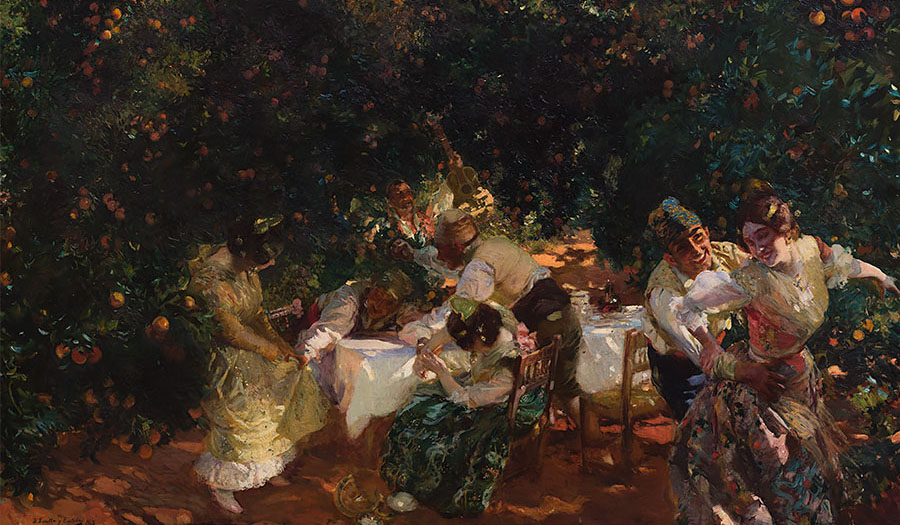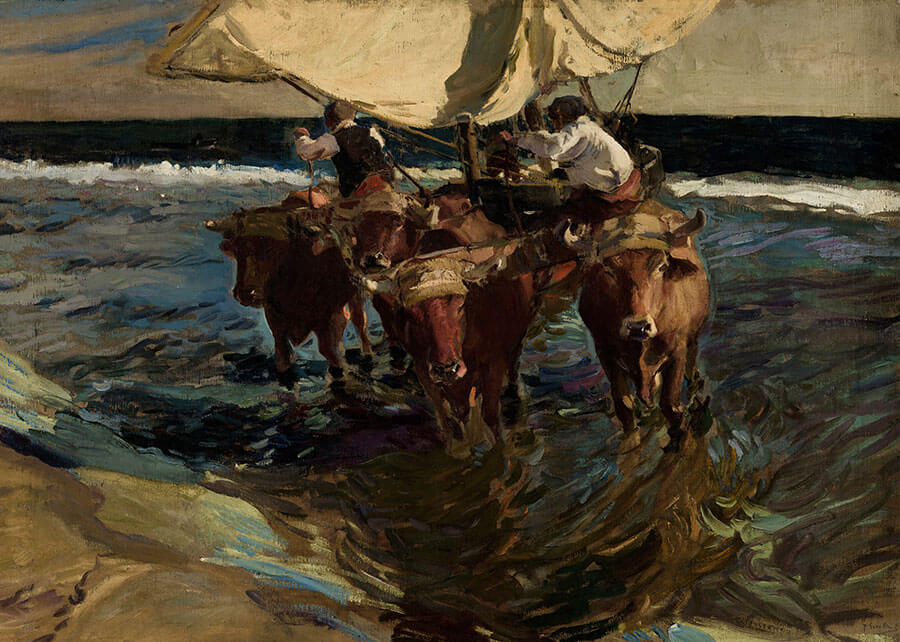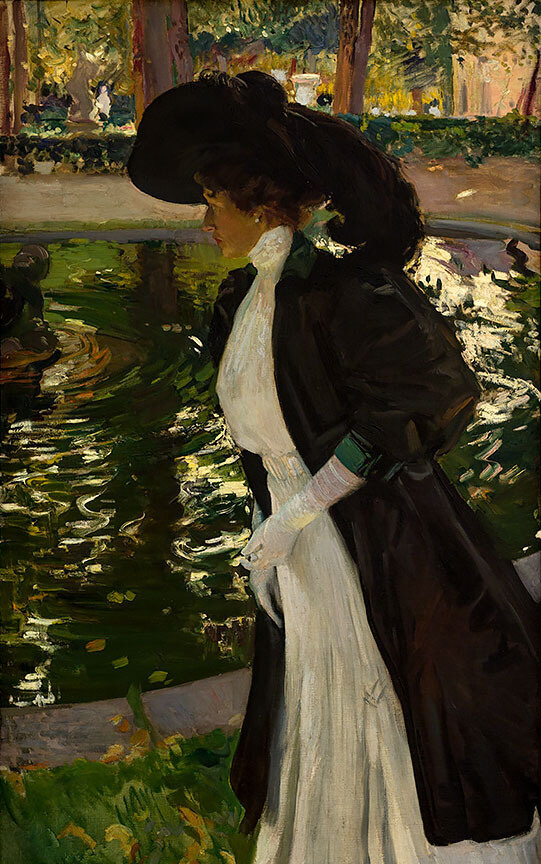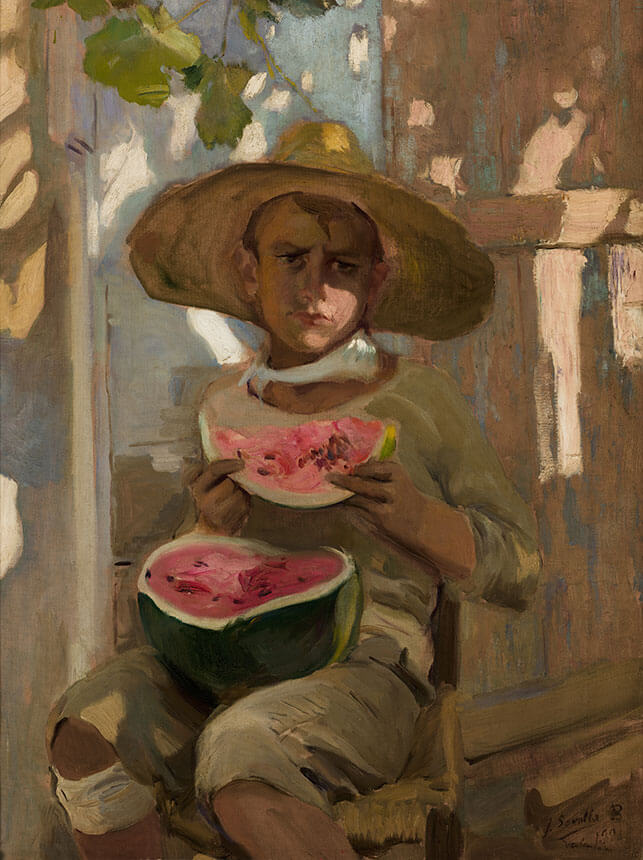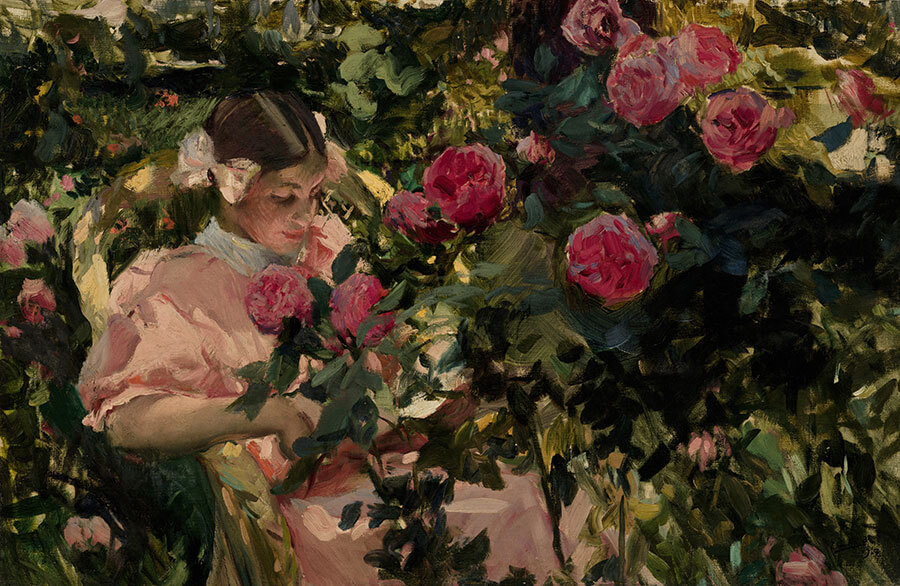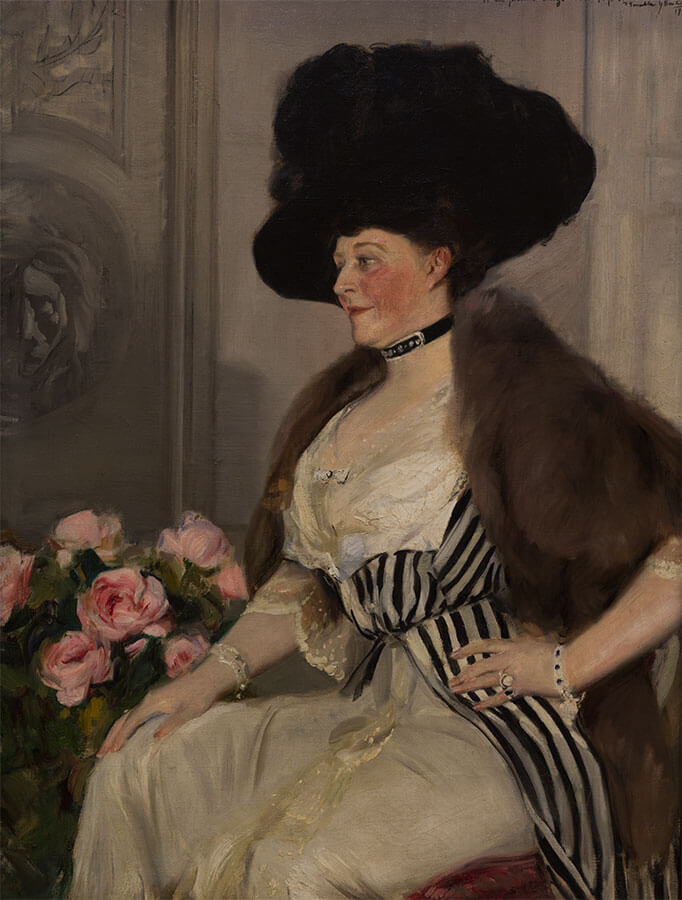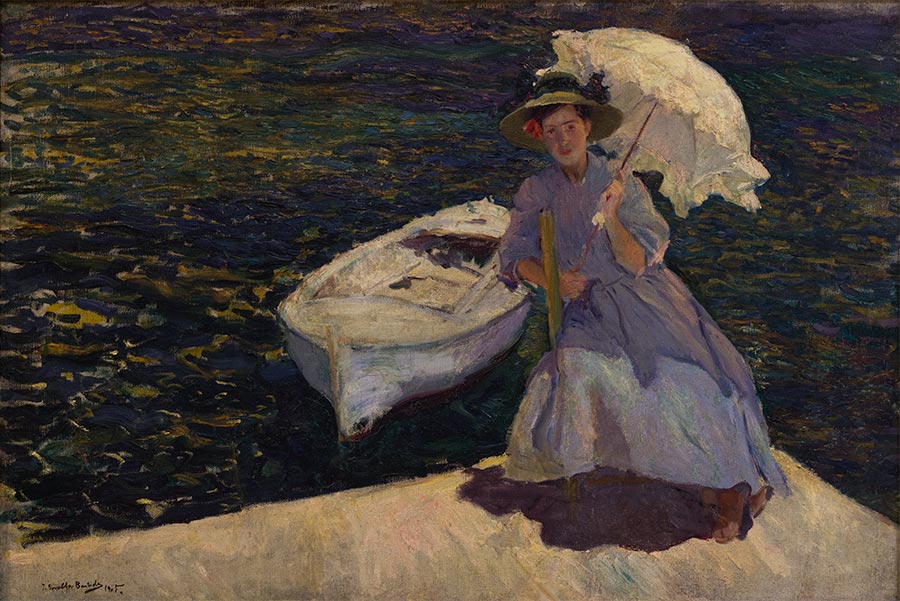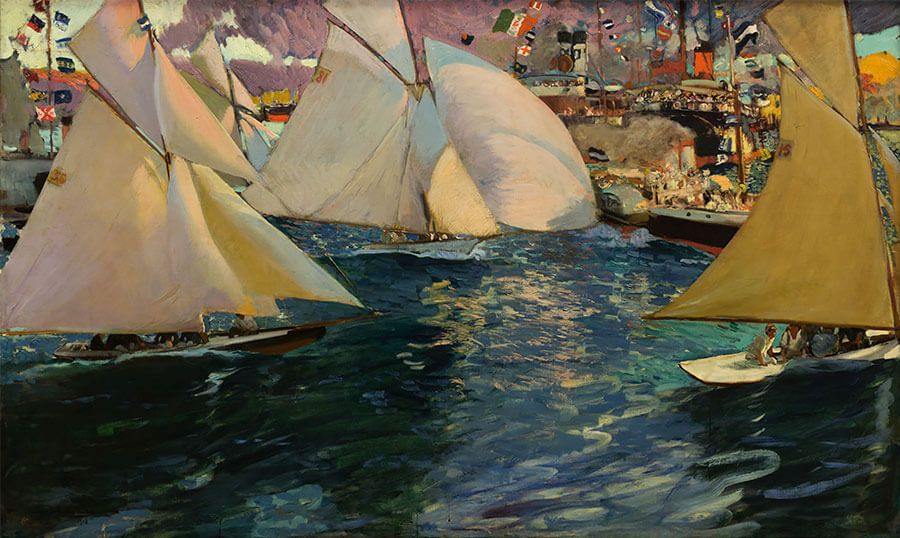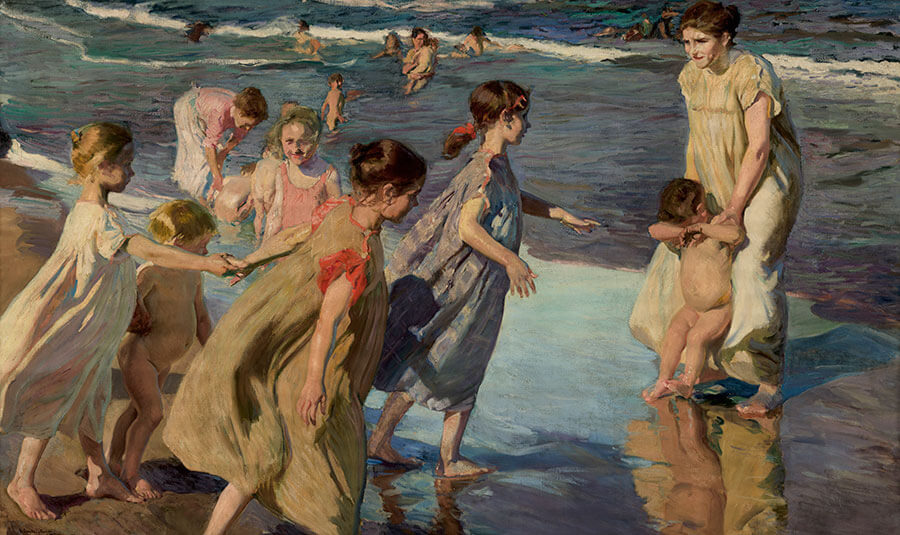Fine Arts National Museum
Sorolla Gallery
Joaquín Sorolla was born on 27 February 1863 in Valencia, Spain. Sorolla was the eldest child born to a tradesman, also named Joaquín Sorolla, and his wife, Concepción Bastida. His sister, Concha, was born a year later. In August 1865, both children were orphaned when their parents died, possibly from cholera. They were thereafter cared for by their maternal aunt and uncle, a locksmith.
Within the collection of the National Museum of Havana, Spanish painting occupies an important place. This notable presence responds, without a doubt, to a special historical relationship between both nations.
The colonial connection of Cuba to Spain, until the end of the 19th century, as well as the durability of the migratory flow to the Island, which extended in time beyond the achievement of its independence, partly explain a manifest interest in Spanish culture. . Especially with regard to the plastic arts, Spain constituted a paradigm for the Island until the first quarter of the 20th century.
There is a considerable number of young painters who, having graduated from the San Alejandro Academy of Fine Arts, traveled to Madrid to complete their studies, which naturally contributed to affirming that interest. On the other hand, since the end of the 19th century many Spanish painters were concerned about traveling to Cuba, exhibiting and painting among us. Consequently, Cuban collecting was always sensitive to Spanish painting. The collection of the National Museum, far from responding to an independent intention, is the result of the phenomenon to which we have referred. Particularly rich in extension is the section corresponding to the 19th and early 20th centuries, in which some significant nuclei stand out and among these, the painting of Joaquín Sorolla constitutes one of the most comprehensive and representative groups.
Boy Eating Watermelon was the first work by Sorolla to enter the Museum's collection. With the aim of buying paint for its funds, in 1920, the then director of the institution, Antonio Rodríguez Morey, traveled to Madrid. A painter himself and familiar with the Valencian master, he went to his workshop, where he acquired the piece for the low price of 4,000 pesetas, which undoubtedly shows Sorolla's understanding of a low-income institution.
However, the earliest news we have of a piece that was purchased by a Cuban corresponds to a commission from 1894: Portrait of the Marquise of Balboa (cat.16). In 1894, only a few years after settling in Madrid, Sorolla had achieved a good reputation as a fashionable painter, thanks to his awards in competitions and Salons. Introduced into Madrid society by his cultured friend, the painter Aureliano de Beruete—and probably encouraged by him—he began to accept commissions to make portraits. Sorolla's disinterest in some of these commissions is known, but also the juicy profits he received for that concept. That of the Marchioness of Balboa is, apparently, the first in a series of portraits made of the Cuban colonial aristocracy, which maintained close ties with Madrid society.
But apart from this type of works, whose customer attraction was motivated by fashion, there was also in Cuba an inherent concern in collecting for Sorolla's most authentic work. This other orientation corresponds to the Scene of the Port of Valencia, a landscape typical of its style, purchased by the Havana native Joaquín Godoy from the painter in 1904.
Although certainly—perhaps contradicting general rules—Sorolla's work was collected in greater profusion in Cuba after the painter's death and until the 1950s, it should be noted that this interest in the author existed—in one form or another—since before he reached full maturity around 1900. And that taste for his painting remained throughout the master's life and continued to grow after his death.
The year 1921, after Sorolla suffered an attack of hemiplegia, dates back to the first and only occasion that we know of, in which some of his work was publicly exhibited in Cuba—during the painter's lifetime.
This is the Portrait of the Mexican tiple Esperanza Iris, one of the last paintings painted by the artist, whose owner at that time, as well as its current whereabouts, is unknown. The portrait was exhibited at the Salon of Fine Arts in Havana, and was reproduced and conveniently disseminated by the press. Aside from the well-known popularity of the sitter in Cuba, the way in which the exhibition was focused denotes the attention that the painter aroused at the time, undoubtedly increased by the uncertainty about whether he would paint again or not. In truth, it may seem strange that until that date Sorolla had not exhibited in Cuba, especially if we take into consideration that other Spanish painters who were his contemporaries had already done so.
In fact, many years before they should have produced their first exhibition on the Island. According to the journalist Manuel Carretero, in a Madrid newspaper in 1907, that same year Sorolla had planned to exhibit his works very soon in the United States of America, Buenos Aires and Cuba. . Since the beginning of that decade, some American institutions had organized exhibitions of the painter to no avail. Likewise, the insistence of José Artal, a dealer in Buenos Aires, to obtain a personal exhibition of the painter is well known.
We do not know the direct reasons that motivated the painter to plan an exhibition in Cuba, but we can attempt an explanation of that desire. On the one hand there are the friendly relations that united him with collectors, art lovers residing on the Island - Spaniards, like the Ducassi, and Cubans -, and also painters who admired his work; on the other hand, the interest that it had already aroused in the country. And finally, we must take into account the fact that Havana was an American plaza of some importance for Spanish painting. This is proven by the many artists who have traveled here since the 19th century to exhibit. Ignacio Zuloaga - another winner, whom critics became Sorolla's enemy only because he saw painting in a different way - held an exhibition with notable success in Havana, two years after the death of the Valencian master.
Everything suggests that an exhibition by Sorolla - whose work is perhaps much more similar to the Cuban temperament than that of the Basque painter - would have had good results. The truth is that the exhibition planned by Sorolla did not take place and the Cuban public had to wait first until 1921 and then until 1928 to appreciate his art.

